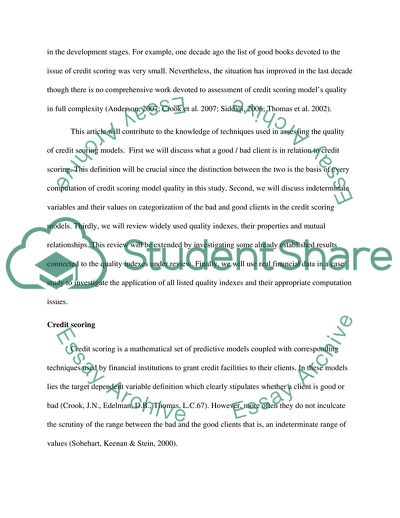Cite this document
(Influence of Indeterminate Values on Predictive Ability of Scoring Coursework Example | Topics and Well Written Essays - 3000 words, n.d.)
Influence of Indeterminate Values on Predictive Ability of Scoring Coursework Example | Topics and Well Written Essays - 3000 words. https://studentshare.org/statistics/1845654-influence-of-indeterminate-values-on-predictive-ability-of-scoring-models
Influence of Indeterminate Values on Predictive Ability of Scoring Coursework Example | Topics and Well Written Essays - 3000 words. https://studentshare.org/statistics/1845654-influence-of-indeterminate-values-on-predictive-ability-of-scoring-models
(Influence of Indeterminate Values on Predictive Ability of Scoring Coursework Example | Topics and Well Written Essays - 3000 Words)
Influence of Indeterminate Values on Predictive Ability of Scoring Coursework Example | Topics and Well Written Essays - 3000 Words. https://studentshare.org/statistics/1845654-influence-of-indeterminate-values-on-predictive-ability-of-scoring-models.
Influence of Indeterminate Values on Predictive Ability of Scoring Coursework Example | Topics and Well Written Essays - 3000 Words. https://studentshare.org/statistics/1845654-influence-of-indeterminate-values-on-predictive-ability-of-scoring-models.
“Influence of Indeterminate Values on Predictive Ability of Scoring Coursework Example | Topics and Well Written Essays - 3000 Words”. https://studentshare.org/statistics/1845654-influence-of-indeterminate-values-on-predictive-ability-of-scoring-models.


